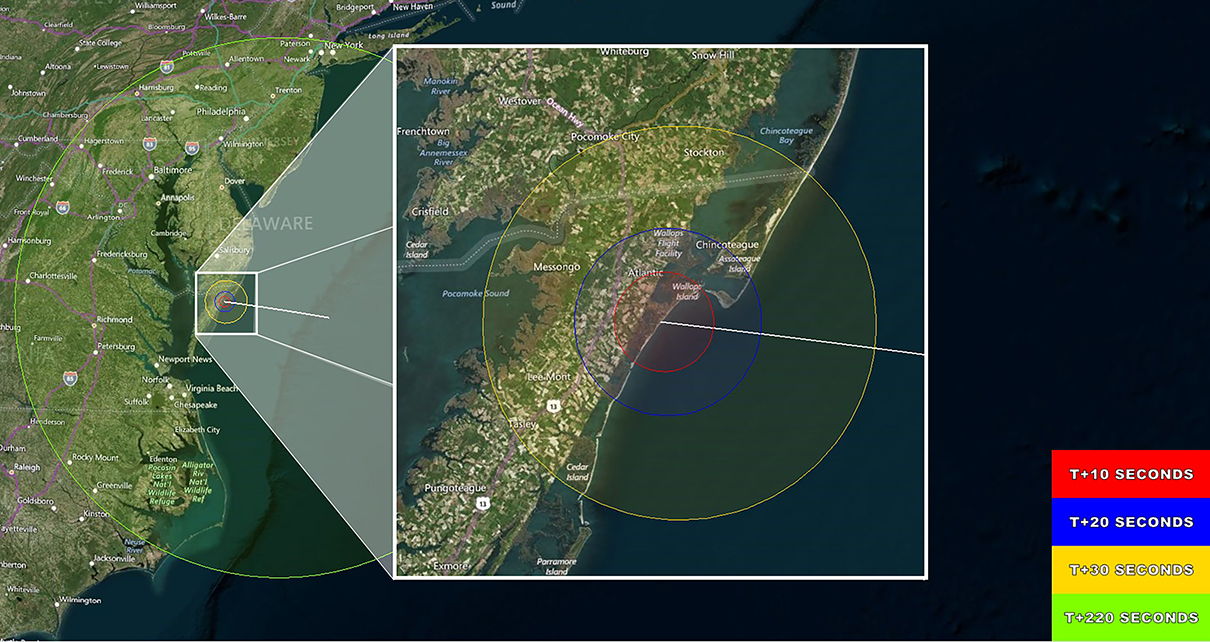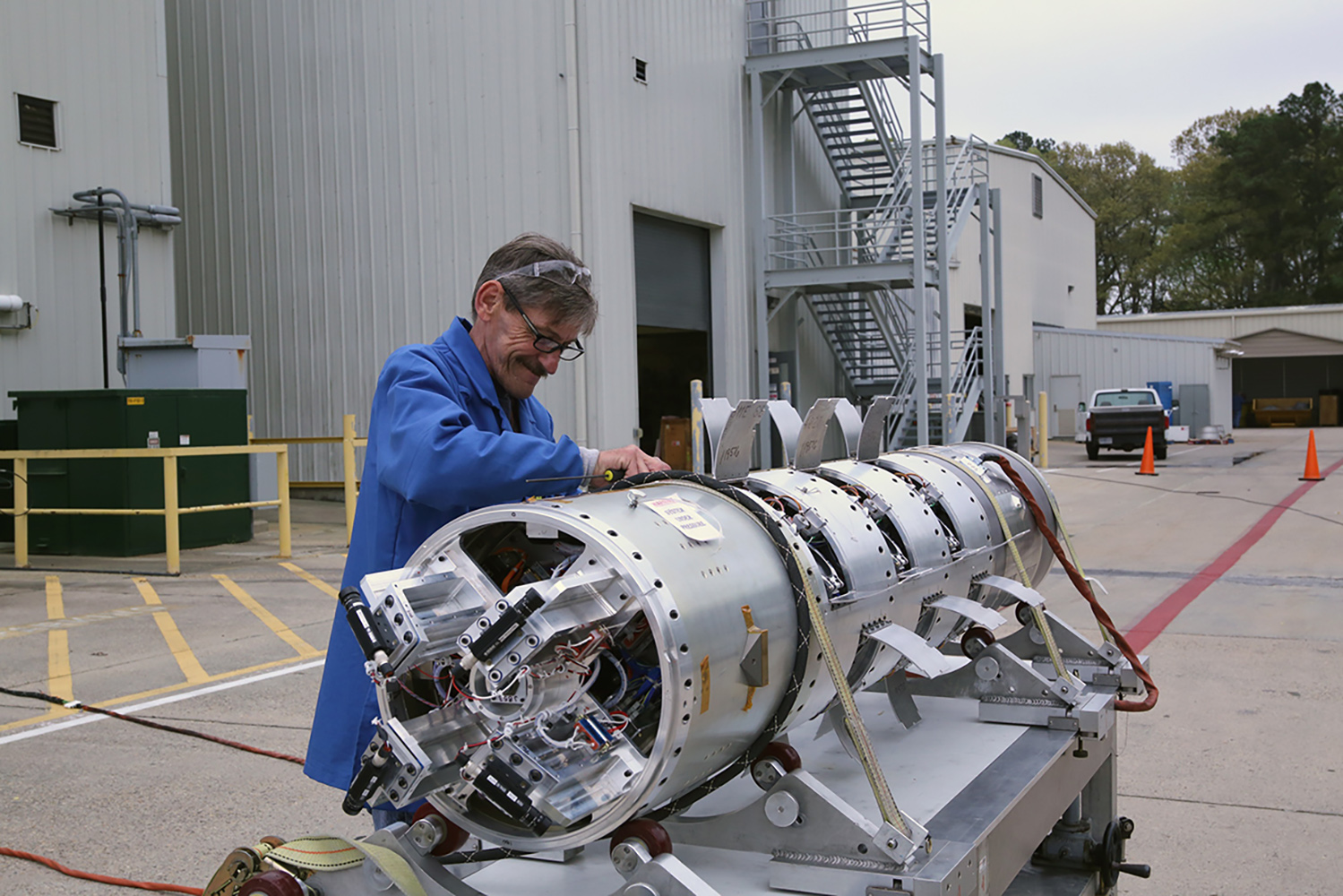NASA Rocket Will Try Again to Spark Glowing Clouds Over US East Coast Tonight
Update for June 16: NASA's next attempt to launch a small sounding rocket to create glowing clouds in the night sky will occur no earlier than Sunday night (June 18). Liftoff from NASA's Wallops Flight Facility from Wallops Island, Virginia is scheduled for some time between 9:05 p.m. EDT and 9:20 p.m. EDT (0105-0120 GMT).
Original story: A small NASA rocket is once again poised to launch tonight (June 13) on a mission to spawn artificial glowing clouds over the U.S. East Coast after a series of frustrating delays due to cloudy weather and stray boats.
The booster, a Terrier-Improved Malemute sounding rocket, is scheduled to launch between 9:04 p.m. EDT and 9:19 p.m. EDT (0104 to 0119 GMT Wednesday) from NASA's Wallops Flight Facility on Wallops Island, Virginia. The launch, however, is extremely dependent on weather conditions.
You can watch the launch live here, courtesy of NASA TV, beginning at 8:30 p.m. EDT (0030 GMT). It will be streamed live by NASA Wallops on Ustream here: http://www.ustream.tv/channel/nasa-tv-wallops. At 8:50 p.m. EDT (0050 GMT), NASA will also offer a Facebook Live video feed at the NASA Wallops Facebook page here: http://www.facebook.com/NASAWFF.

If all goes as planned, the rocket will create brilliant red and blue glowing clouds when it releases gas-filled canisters high above Earth that may be visible from New York to North Carolina, and as far inland as Charlottesville, Virginia, NASA officials have said. The mission is a technology demonstration flight to test a new ejection system for the canisters, which will aid future studies of Earth's ionosphere and auroras, they added.
But NASA has been trying to launch this potentially dazzling mission all month, only to be foiled by unacceptable weather and other details. The launch window opened on June 1 and closes on June 18.
Several attempts to launch the rocket between June 1 and June 4 were called off due to high winds, cloudy weather or boats in the offshore hazard area where parts of the rocket will fall back to Earth. A new round of attempts began Sunday (June 11), when stray boats again prevented launch. Then came last night's try, where clouds at two ground-based camera sites — one at the Wallops center and the other in Duck, North Carolina — forced mission scientists to stand down for the night.
Get the Space.com Newsletter
Breaking space news, the latest updates on rocket launches, skywatching events and more!
To observe the glowing clouds created by the rocket launch, clear skies are required at both camera sites, NASA officials said.
And while those many delays may be frustrating (especially for the science team), they're sometimes necessary.
"When conducting rocket science missions, delays are to be expected because of the often stringent requirements for the flight to occur," Wallops News Chief Keith Koehler told Space.com via email. "While delays due to weather or marine traffic is frustrating, the launch team will maintain its focus to conduct a safe launch."

During tonight's launch try, the sounding rocket launch will last about 8 minutes before splashing down 90 miles (145 kilometers) offshore from Wallops Island. The mission will create glowing clouds by releasing vapor tracers of barium, strontium and cupric oxide at altitudes of between 96 and 124 miles (155 to 200 km) above Earth, NASA officials said, adding that the vapor tracers pose no hazard to the public.
"Canisters will deploy between 4 and 5.5 minutes after launch, releasing blue-green and red vapor to form artificial clouds," NASA officials wrote in a status update late Monday. "These clouds, or vapor tracers, allow scientists on the ground to visually track particle motions in space. The clouds may be visible along the mid-Atlantic coastline from New York to North Carolina."
If you live near the Wallops Island area, you can visit NASA's Wallops Flight Facility Visitor Center to watch the launch. The center will open to the public at 8 p.m. EDT for launch viewing.
Smartphone users can also download the "What's Up at Wallops" app to learn when and where to look to see the launch from their location. Leading up to the launch, Wallops officials will also post updates on Twitter and Facebook.
Editor's note: If you capture an amazing image of the sounding rocket launch or the colorful artificial clouds that you would like to share with Space.com and its news partners for a story or photo gallery, send photos and comments to: spacephotos@space.com.
Email Tariq Malik at tmalik@space.com or follow him @tariqjmalik and Google+. Follow us @Spacedotcom, Facebook and Google+. Original article on Space.com.
Join our Space Forums to keep talking space on the latest missions, night sky and more! And if you have a news tip, correction or comment, let us know at: community@space.com.

Tariq is the Editor-in-Chief of Space.com and joined the team in 2001, first as an intern and staff writer, and later as an editor. He covers human spaceflight, exploration and space science, as well as skywatching and entertainment. He became Space.com's Managing Editor in 2009 and Editor-in-Chief in 2019. Before joining Space.com, Tariq was a staff reporter for The Los Angeles Times covering education and city beats in La Habra, Fullerton and Huntington Beach. In October 2022, Tariq received the Harry Kolcum Award for excellence in space reporting from the National Space Club Florida Committee. He is also an Eagle Scout (yes, he has the Space Exploration merit badge) and went to Space Camp four times as a kid and a fifth time as an adult. He has journalism degrees from the University of Southern California and New York University. You can find Tariq at Space.com and as the co-host to the This Week In Space podcast with space historian Rod Pyle on the TWiT network. To see his latest project, you can follow Tariq on Twitter @tariqjmalik.









